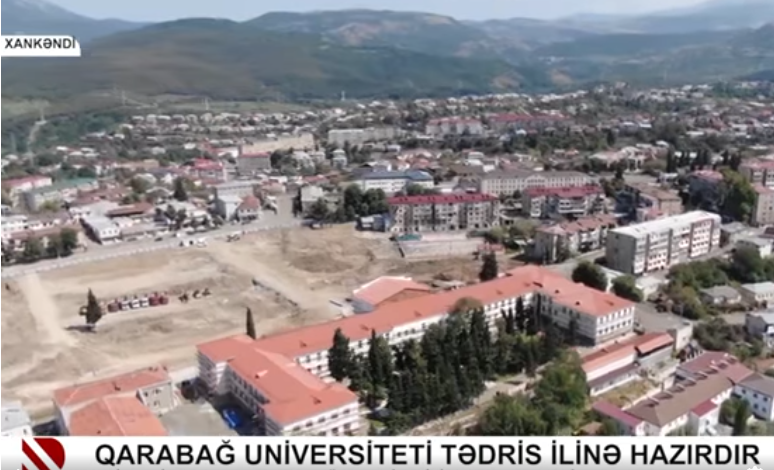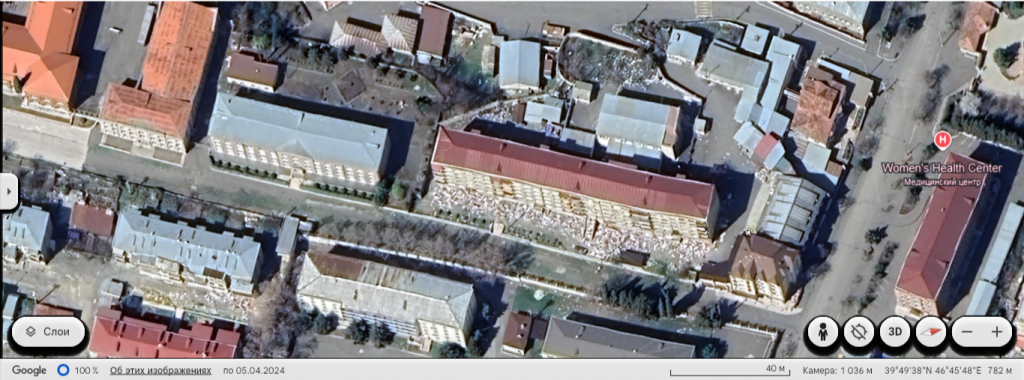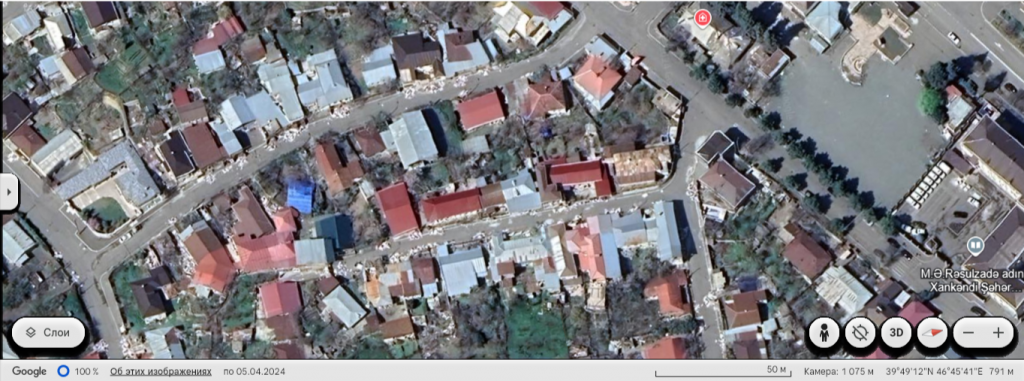In the past few days, information was circulated on the Internet that Azerbaijanis are destroying one of the famous streets of Stepanakert -Tumanyan Street.
Sergey Shahverdyan, Secretary of Public Council for Protection of Cultural Heritage of Artsakh, posted on his Facebook page that “Azerbaijan administration has launched mass destruction of residential buildings in occupied Stepanakert.”
“Over the past few days, along Tumanyan Street in Stepanakert, the oldest historical districts of the capital have been razed to the ground, thereby violating the property rights of thousands of owners of private buildings from the 19th and early 20th centuries,” he writes.
Fact Investigation Platform examined the video on the Internet, compared it with maps and revealed that the video does depict Tumanyan Street and that it is being destroyed by the Azerbaijanis.

Tumanyan Street was one of the most beautiful streets of Stepanakert featuring residential areas, shops and cafes. The street was of high importance both for the residents and tourists. Tumanyan was one of the streets of Stepanakert that preserved the Armenian architecture, and everyday customs and traditions. The street was home to mostly single-story and two-story houses with wooden balconies.

Other buildings in Stepanakert that the Azerbaijanis destroyed
In March 2024, it became known that Azerbaijanis started destroying the Artsakh Parliament building.
Examining the latest data with Google Earth, it becomes clear that the Azerbaijanis destroyed not only the Artsakh Parliament building in its entirety, but also the Artsakh Freedom Fighters Union building which was commissioned and officially opened in 2014, as well as Armenia Hotel located next to the Parliament building.
The official video on the demolition of the Parliament building was aired on Azerbaijani television, where the demolition works were interpreted as the dismantling of symbols of separatism.


The building of the Parliament of Artsakh was built in 2003-2007. It was one of the symbols of the political identity of Artsakh.
From other videos that were circulated on the Internet in spring, it was obvious that the Azerbaijanis also demolished a number of residential buildings on Mkhitar Gosh and Freedom Fighters Streets near the Artsakh State University.



In addition to the complete destruction of residential buildings near the university, Azerbaijanis have also altered the appearance of the university.
The university was founded in the second half of the 20th century- in 1969.
At the time of its establishment, the university was called “Stepanakert branch of V. Lenin Pedagogical Institute of Baku” and had only two chairs: language and literature, and mathematics, which were taught in Armenian, Azerbaijani, and later also in Russian.
In 1973, the university received independent status and was renamed “Stepanakert State Pedagogical Institute.”
In the turmoil of the Artsakh war, in October, 1992, the Government of the Republic of Armenia adopted a decision to merge the Stepanakert department of the Vanadzor Pedagogical Institute with the Stepanakert branch of the Yerevan Engineering University, naming the newly created university the “Artsakh State University – ArSU.”
The satellite images of Stepanakert show that some time after the occupation of the city, the Azerbaijanis started looting the property of Armenians. Large piles of garbage can be seen in the yards of residential buildings and private houses in Stepanakert.




In addition to residential areas and other buildings, Azerbaijanis also destroyed and toppled a number of symbols of the city of Stepanakert, for example, the statue of Stepan Shahumyan.
The height of Shahumyan’s bronze statue was 2.5 meters, the authors of which were sculptors Suren Stepanyan and Adibek Grigoryan. The pedestal was four meters high. It was made of local marble. The statue was unveiled on May 1, 1957.
Another example is Stepanakert’s illuminating cross.
The cross was installed on May 9, 2017 in memory of the servicemen who fell for the liberation and defense of Artsakh. It was the second highest in the European region visible from all sides of Stepanakert, the capital of Artsakh, illuminated with special lights that made it visible even at night.
Azerbaijanis also dismantled the statues of Ashot Bekor, Charles Aznavour, Vahram Papazyan, Hovhannes Baghramyan, Admiral Isakov and others.
Syuzanna Hambardzumyan

 FACTOMETER
FACTOMETER










